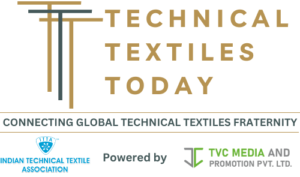Shri Avinash Misar – Chairman, ITTA

The Indian Technical Textile Association (ITTA) is a knowledge repository & voice of Technical Textile Industry in India. It covers all the 13 segments of Technical Textiles and is playing a pivotal role by contributing to process of formulation of policies & guidelines on Technical Textiles at Central and State Govt. levels.
The growth of the industry has been primarily due to the entrepreneurial ingenuity of the Indian industry & timely, supplemented by the schemes of the MoT, GoI incentivizing the investment for the benefits of the Technical Textile growth in India.
ITTA helps new entrepreneurs to identify suitable business / technologies to invest in Technical Textiles. ITTA focus is on the value-added initiatives for the benefits and growth of the Indian Technical Textile industry.
The Protective Textile is one of the very important core segments within 13 verticals of Technical Textiles, which encompasses textiles designed for industrial workman safety and as well for defence & paramilitary forces. The garments such as fire-resistant garments, ballistic vests, chemical protective suits, high-visibility materials, extreme cold weather system (ECWS) & many more plays a vital role in ensuring the safety of workers, military personnel, and emergency responders across various fields.
Despite its increasing significance, the industry encounters several obstacles. These challenges arise from technological, regulatory, and market influences. The main issues facing the Protective Textile industry includes the below.
Material Limitations: Although protective textiles have seen considerable advancements in both materials and manufacturing methods, there remains a need for more efficient and lightweight fabrics. Striking the right balance between safety and comfort is an ongoing challenge. For instance, the materials must offer sufficient protection against heat, fire, chemicals, or mechanical threats while still allowing for the wearer’s ease of movement and comfort.
Tight Regulatory Demands: Protective textiles must adhere to strict standards and regulations in various industries, including healthcare, military, and industrial sectors. Meeting these compliance requirements can be both costly and time intensive. Additionally, regulations differ by region (such as ANSI/ISEA standards in the United States and EN standards in Europe), complicating international market navigation for manufacturers. With advancements in technology and improvements in the understanding of protective textiles, standards and regulations undergo continuous updates. Manufacturers need to keep updated with these changes, which could necessitate investments in product re-certification or redesign efforts.
High Production Costs: The creation of protective textiles frequently requires the utilization of specialized materials, such as flame-retardant fibers, aramid fibers, or ballistic-grade fabrics, along with sophisticated manufacturing methods, which can be costly. As a result, this increases the overall price of the final product, potentially restricting its availability, especially in emerging markets or for smaller enterprises.
The Protective Textile industry in India is poised for significant growth, driven by a range of opportunities stemming from both domestic and global factors. Some of the key opportunities available for the growth of the Protective Textile industry in India:
Industrial Safety Regulations: India’s industrial sector, encompassing manufacturing, construction, mining, and oil & gas, is experiencing swift growth. With this expansion, there is a rising need for protective apparel, including flame-resistant, high-visibility, and chemical-resistant clothing. Regulations such as the Factories Act, Occupational Safety and Health (OSH) guidelines, and various sector-specific safety standards are driving organizations to implement protective textiles to ensure the safety of their workers.
Increasing Awareness of Workplace Safety: A growing recognition of the significance of worker safety is evident across various industries, contributing to a heightened demand for protective clothing and equipment. This trend is particularly pronounced in sectors characterized by hazardous environments, such as heavy industries, firefighting, and the chemical sector. With the government enforcing stricter safety regulations, organizations will be obligated to supply personal protective equipment (PPE), leading to a consistent market for protective textiles.
Geopolitical Strains and Security Issues: As regional geopolitical tensions grow, the need for advanced protective textiles for military, law enforcement, and security forces is anticipated to surge. This shift may result in a higher demand for protective equipment, including bulletproof vests, stab-resistant garments, and chemical suits, thereby opening new business opportunities for manufacturers.
Export Prospects: There is a notable increase in the global demand for protective textiles, especially in regions like North America, Europe, and certain areas of the Middle East. India’s competitive manufacturing costs, along with improvements in quality and technology, create a solid foundation for exporting these textiles. Key export markets include countries with rigorous workplace safety regulations and those engaged in substantial industrial or military activities.
Introduction of Quality Control Order (QCO) on Technical Textiles is to prevent sub-standard products being marketed/imported to India, so far, many products have been brought under QCO, which includes 12 products of Protective Textiles. In coming times, it would be mandatory for the Indian Eco-system to respect the safety standards for the workman & motivate the usage of protective wear in this hugely developing country. In conclusion, the Protective Textile industry in India has a huge opportunity to grow in both domestic and export markets with support of Regulatory Compliances from various Govt. Ministries like Ministry of Labor, Ministry of Industries, Ministry of Chemicals & Petro- Chemicals & others.
